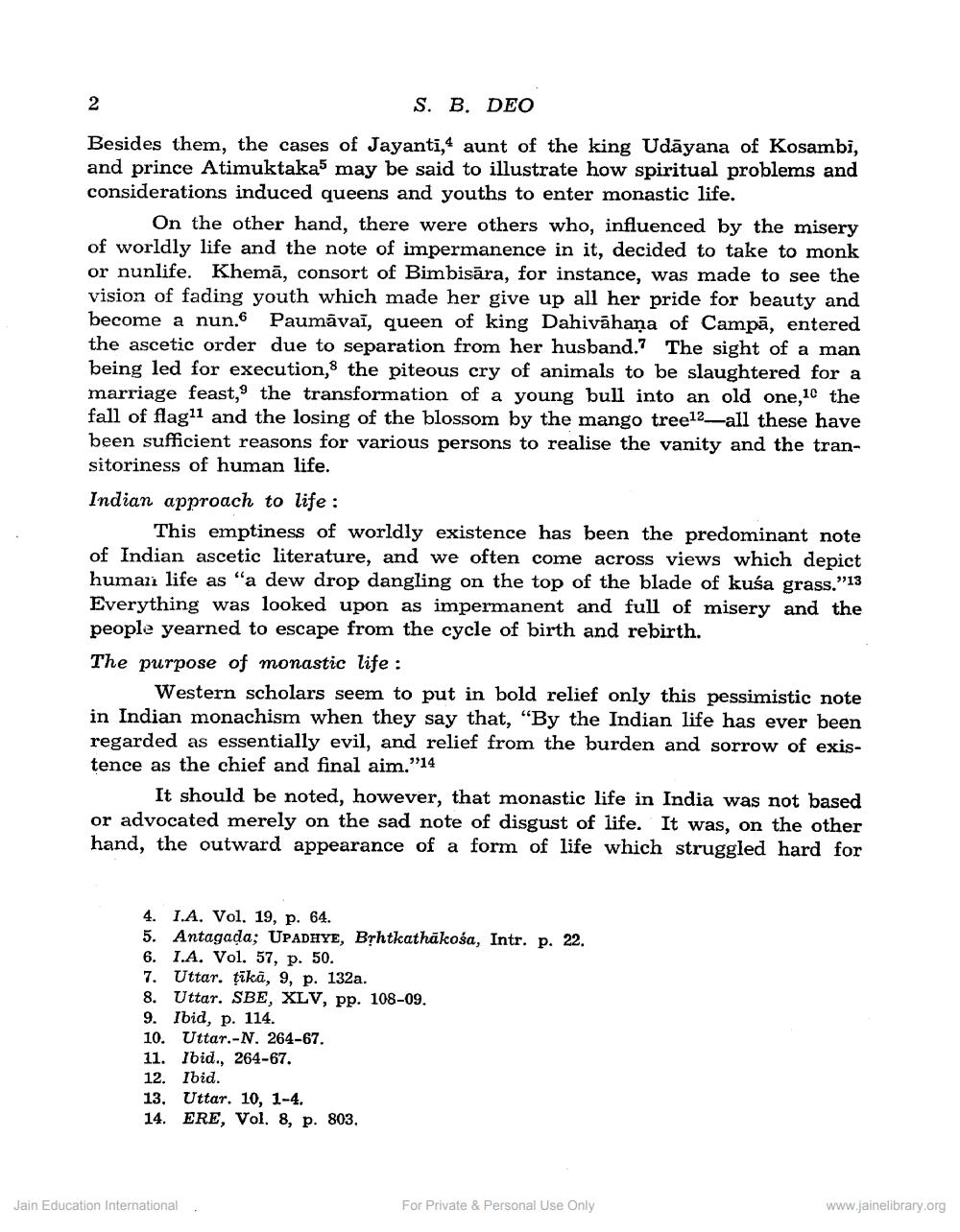Book Title: History of Jaina Monachism Author(s): S B Deo Publisher: Deccan College Research Institute View full book textPage 7
________________ 2 S. B. DEO Besides them, the cases of Jayanti, aunt of the king Udayana of Kosambi, and prince Atimuktaka may be said to illustrate how spiritual problems and considerations induced queens and youths to enter monastic life. On the other hand, there were others who, influenced by the misery of worldly life and the note of impermanence in it, decided to take to monk or nunlife. Khema, consort of Bimbisära, for instance, was made to see the vision of fading youth which made her give up all her pride for beauty and become a nun. Paumâvai, queen of king Dahivahana of Campa, entered the ascetic order due to separation from her husband. The sight of a man being led for execution, the piteous cry of animals to be slaughtered for a marriage feast, the transformation of a young bull into an old one,10 the fall of flag and the losing of the blossom by the mango tree12-all these have been sufficient reasons for various persons to realise the vanity and the transitoriness of human life. Indian approach to life: This emptiness of worldly existence has been the predominant note of Indian ascetic literature, and we often come across views which depict human life as "a dew drop dangling on the top of the blade of kusa grass."13 Everything was looked upon as impermanent and full of misery and the people yearned to escape from the cycle of birth and rebirth. The purpose of monastic life: Western scholars seem to put in bold relief only this pessimistic note in Indian monachism when they say that, "By the Indian life has ever been regarded as essentially evil, and relief from the burden and sorrow of existence as the chief and final aim."14 It should be noted, however, that monastic life in India was not based or advocated merely on the sad note of disgust of life. It was, on the other hand, the outward appearance of a form of life which struggled hard for 4. I.A. Vol. 19, p. 64. 5. Antagada; UPADHYE, Brhtkathakosa, Intr. p. 22. 6. I.A. Vol. 57, p. 50. 7. Uttar. tikā, 9, p. 132a. 8. Uttar. SBE, XLV, pp. 108-09. 9. Ibid, p. 114. 10. Uttar.-N. 264-67. 11. Ibid., 264-67. 12. Ibid. 13. Uttar. 10, 1-4. 14. ERE, Vol. 8, p. 803. Jain Education International For Private & Personal Use Only www.jainelibrary.orgPage Navigation
1 ... 5 6 7 8 9 10 11 12 13 14 15 16 17 18 19 20 21 22 23 24 25 26 27 28 29 30 31 32 33 34 35 36 37 38 39 40 41 42 43 44 45 46 47 48 49 50 51 52 53 54 55 56 57 58 59 60 61 62 63 64 65 66 67 68 69 70 71 72 ... 616
